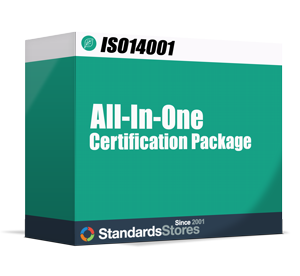Understanding the needs and expectations of interested parties in ISO 14001:2015 EMS
ISO 14001 interested parties (section 4.2) is an important and critical step for defining your EMS. You must understand the needs and expectations of interested parties related to the EMS. This step is crucial because the interested parties will greatly influence the direction of your Environmental Management System.
ISO 14001 Internested Parties (Section 4.2) is a new subclause introduced in ISO 14001:2015. Identifying interested parties is critical to help determine the scope of the EMS within your organization. Although there are many factors that go into determining the scope, you may be able to break down the scope to two main categories: Context (Section 4.1) and Interested Parties (Section 4.2)
Subclause 4.2 can be addressed in 4 steps:
STEP 1 – Identify the interested parties relevant to your organization.
STEP 2 – Identify the person, team or department within your organization that is responsible for each interested party.
STEP 3 – Identify needs & expectations of interested parties based on their requirements, experience, interview, survey, etc.
STEP 4 – Establish controls within your management system and review & monitor these controls on a schedule
How does an organization decide who and what they need to include within their EMS scope?
Each organization has its own interested parties depending on its sector and what the organization decides is relevant to their business. When defining who your interested parties are, you must be clear which are relevant.
Identifying your interested parties:
When identifying your ISO 14001 interested parties, it’s important to ask who your interested parties are and why do they care? There will be many reasons why people will be interested in your EMS as well as your environmental impact. It is important as an organization to consider the various reasons interested parties may have needs and expectations from your organization and specifically its EMS.
After identifying who the interested parties are and the reason they are interested, it is required for your organization to have a high-level understanding of the internal and external parties needs. This will be the starting point of the compliance obligations your organization must meet. At this stage you must identify the details and the exact expectations.
For example, if you have a customer who expects you to use recycled shipping material or reusable packaging and you do not have either reusable or recyclable shipping containers, this would be an example of an interested parties expectations that your organization needs to meet.
When your organization is identifying the obligatory interested party clause, it is important to note that for the most part these obligations are voluntary and you get to decide which ones you want to answer. Despite the fact that you are able to decide which ISO 14001 interested parties’ requirements you would like to meet for your scope, organizations MUST meet legislative requirements. Although they may be mandatory, legislative requirements are still covered under interested parties.
Interested Parties May Include:
- Employees and Employee Families
- Regulatory authorities such as Local Authorities, EPA, SEPA and the Environment Agency
- Owners, Shareholders
- Suppliers, Contractors and Subcontractors
- Clients/Customers
- Investors and Bankers
- Insurers
- Local Community and Neighbors of the Organization
- General Public
- Emergency Services
- Non-Governmental Organizations (NGOs)
- Professional bodies for Environmental Practitioners
Compliance Obligations for Interested Parties
Organizations must determine, in detail, the compliance obligations it identified in clause 4.2 that are applicable to its environmental aspects, and how they apply to the organization. This includes any mandatory legal requirements.
Common environmental regulations include:
- government entities or other authorities
- international, national and local laws and/or regulations
- requirements specified in permits, licenses
- orders, rules or guidance from regulatory agencies
- judgments of courts or administrative tribunals
- agreements made with the community or other NGOs
- agreements with customers
- organizational or industry standards
Overall, meeting the ISO 14001 requirement for interested parties is a necessary step to complete and helps define your scope. This requirement is an easy process to maintain once established. Remember that ISO 14001:2015 is based on corrective action and continual improvement.




